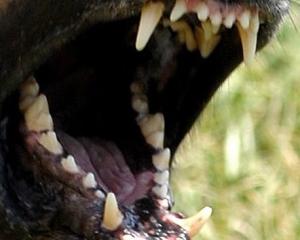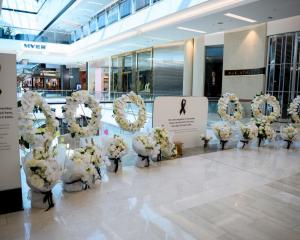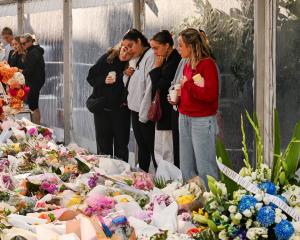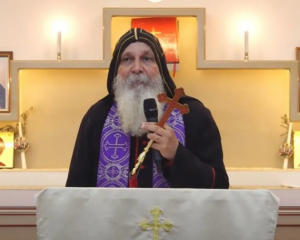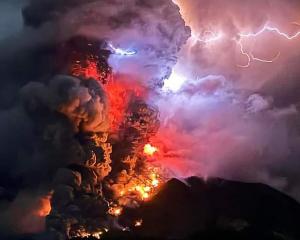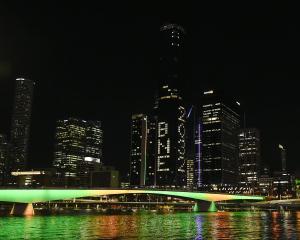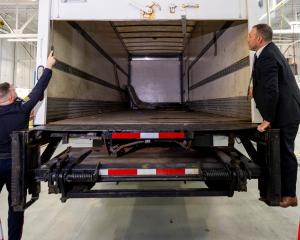For some residents of Chernobyl, a three-day evacuation turned into a 30-year exile, while others have willingly returned to the site of the world's worst nuclear accident.
On the morning of April 26, 1986, no one could yet tell that a meltdown at the nuclear plant in then-Soviet Ukraine was poisoning the air with so much deadly radioactivity.
Tuesday marks the 30th anniversary of the disaster, caused by a botched safety test in the plant's fourth reactor that sent clouds of nuclear material across much of Europe.
The disaster and the government's handling of it - the evacuation order only came 36 hours after the accident - highlighted the shortcomings of the Soviet system with its unaccountable bureaucrats and entrenched culture of secrecy.
Former president Mikhail Gorbachev has since said he considered Chernobyl one of the main nails in the coffin of the Soviet Union which eventually collapsed in 1991.
The accident killed 31 right away and forced tens of thousands to flee. The final death toll of those killed by radiation-related illnesses such as cancer is subject to debate.
A Greenpeace report ahead of the anniversary cites a Belarusian study estimating the total cancer deaths from the disaster at 115,000, in contrast to the World Health Organisation's estimate of 9000. The Greenpeace study also said people living in the area continue to eat and drink foods with dangerously high radiation levels.
EVACUATION TO EXILE
As some survivors returned to their hometown of Pripyat, a model Soviet town built in the 1970s to house Chernobyl workers and their families, on the eve of the anniversary, memories of confusion and sacrifice abound.
"I barely found my apartment, I mean it's a forest now - trees growing through the pavement, on the roofs. All the rooms are empty, the glass is gone from the windows and everything's destroyed," said Zoya Perevozchenko.
The 66-year-old only realised something might be wrong that day 30 years before when her husband, Valeriy, didn't come back from his night shift as a foreman at the stricken reactor. She left her apartment in Pripyat to look for him.
"I remember thinking, 'Goodness it's hot' and some people were in masks. But they didn't explain things to us straight away, it was all secret. And the kids were running about barefoot in the puddles," she said.
She found her husband in a local clinic. He had received a fatal dose of radiation that had burnt the skin on his face bright red.
He was airlifted to Moscow for treatment, but died 45 days later - one of the 31 to die of acute radiation sickness in the immediate aftermath of the disaster.
Perevozchenko and her two young daughters ended up in Kiev, where they still live. Returning to Pripyat, she found it hard to reconcile the memories of her life there with the derelict ruins of a town abandoned for three decades.
INVISIBLE POISON
Elena Kupriyanova was only 12 when she was evacuated from Pripyat, which lies in the 2600 square km 'exclusion zone' that has remained largely uninhabited by law since the disaster.
"It's very painful that so many people's (lives) were destroyed, that such a beautiful, new town was abandoned. It's hard on the soul," she said.
The 40-year-old's family and most of the town's 50,000 other residents were transported out of the area in buses on April 27 and told to pack only the bare essentials because they would only be away for three days. They took their documents and a small suitcase.
"It was so hot, such beautiful weather. All the fruit trees were in bloom and I thought - what do they mean 'radiation'? It's so nice outside, you can't see anything," Kupriyanova said.
What irks Valentina Yermakova (64) is that many of the belongings they left behind have disappeared. While it is forbidden to remove anything from the radioactive zone, a large amount of portable items have been smuggled out by illegal trophy-hunters and scrap-dealers.
"We locked our apartment when we left. The looters wouldn't have been able to walk in, so they broke the door down," she said. "You go in and it's not that you want to cry, it's more that you get silent and numb from everything you see. The pain, it clenches inside you."
But Yermakova, whose husband worked in the plant and died several years later from causes relating to radiation, said even though Pripyat is in ruins it still feels like home.
"Walking around, you recognise everything - here's Lenin Street, there's the shop "Rainbow" - it was a small town, we know the streets by heart."
RESIDENTS RETURN
But about 160 people found life away from Chernobyl so unbearable they decided to return, despite its highly toxic state.
Maria Lozbin was one of tens of thousands of people to be evacuated from their homes after the accident, but returned with her family six years ago to live off the land inside a 30km exclusion zone where the risk of radiation poisoning remains.
A 69-year-old with a ready laugh, Lobzin said the village to which she had been evacuated was full of drunks and drug addicts.
The house into which she was moved was so shoddily constructed, with a huge crack running from the roof to the basement, that she was afraid of being killed or maimed by a falling object.
"Living there was like waiting for death," she said.
Now she lives with her son and his family back in Chernobyl, in a zone that can only be reached by crossing a checkpoint and where guides accompany curious tourists with radiation meters.
Lozbin keeps chickens, geese and ducks, grows potatoes and tomatoes, and goes foraging for mushrooms in nearby woods. "There is no radiation here. I'm not afraid of anything," she said. "And when it's time for me to die, it won't happen because of radiation."
Maria's daughter-in-law, Oleksandra Lozbin, said police initially tried to force them to leave, but the family refused.
She hoped to inspire others to move back. To remind people what life was like before the accident, the family has created a makeshift museum in a house across the street with objects collected from nearby abandoned cottages.
There are books, a doll in a cot, a rusty wheel, an abacus, and a black-and-white photo of two people. One day, she hopes, someone might see it and recognise their great-grandparents.
"We decided to save the history of Chernobyl," Oleksandra said. "We hope that people will come back here and will live here, and their children and grandchildren will see what life was like here, in what kind of cots people were raised here, in what kind of boxes people stored their personal belongings and books."
On a bench lies a Soviet newspaper from January 24, 1986 - four months before the disaster. The front page headline reads: "No to nuclear testing".

